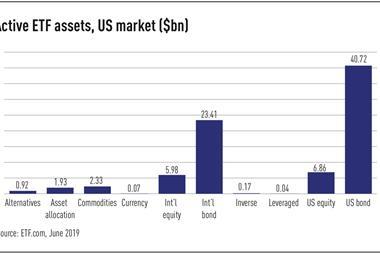A spate of redemption suspensions and the coronavirus crisis-induced application of other extraordinary liquidity management tools by global mutual funds will “force a fundamental investor re-appraisal” of the liquidity these funds can truly provide, according to credit rating agency Fitch.
This was especially the case where mutual funds were invested in less liquid assets, it said, noting that regulators had identified property, high-yield bond and emerging market debt funds as most exposed to liquidity risk.
According to Fitch there have been at least $62bn (€54bn) of mutual fund redemption suspensions this year, the highest annual volume for the past 10 years.
These have been primarily driven by valuation uncertainty rather than the outflows that accounted for about two-thirds of cases, by assets under management, over the previous 10 years.
“We believe that this will lead to greater regulatory and market scrutiny of how fund managers determine asset valuations and apply liquidity management measures,” said Fitch.
It said that mutual funds had benefitted from improvements to market liquidity following central bank interventions during the March 2020 market stress, but that such central bank support might not be so forthcoming in future crises.
Pricing for liquidity
The credit rating agency said it expected widespread use of extraordinary liquidity-management tools would still be a theme in future market stresses, and that investors may therefore increasingly think about liquidity availability in probability terms.
Noting that an academic study* had proposed pricing of liquidity as a real option, it said investors in such a paradigm would need to consider the ‘cost’ of the potential application of additional liquidity management measures.
“[I]f the expected cash flows from a fund with a given market risk-return profile are potentially either not available or materially reduced by the application of additional liquidity-management techniques, then the fund will be less attractive to the end investor,” said Fitch.
“Conversely, the current sustained period of low yields may make investors more willing to accept illiquidity risk in daily dealing funds, assuming these funds offer a yield premium.”
All else being equal, Fitch said, appetite for non-daily dealing funds may increase if investors did ‘price’ illiquidity risk, as these funds may have higher probabilities of providing unimpaired liquidity on demand.
At the same time, perception of an increase in illiquidity risk may hinder investor acceptance of non-daily dealing funds, the credit rating agency said.
It said a move to non-daily dealing would face significant obstacles to implementation, including legal and commercial requirements, market infrastructure, and “perception of simplicity”.
In Europe, retail and institutional funds are allowed to offer non-daily dealing, but daily dealing is the norm.
*Ang, A. & Bollen, N. P. B., 2010, “Locked Up by a Lockup: Valuing Liquidity as a Real Option”, NBER Working Paper No. 15937





























No comments yet